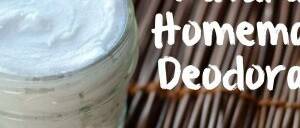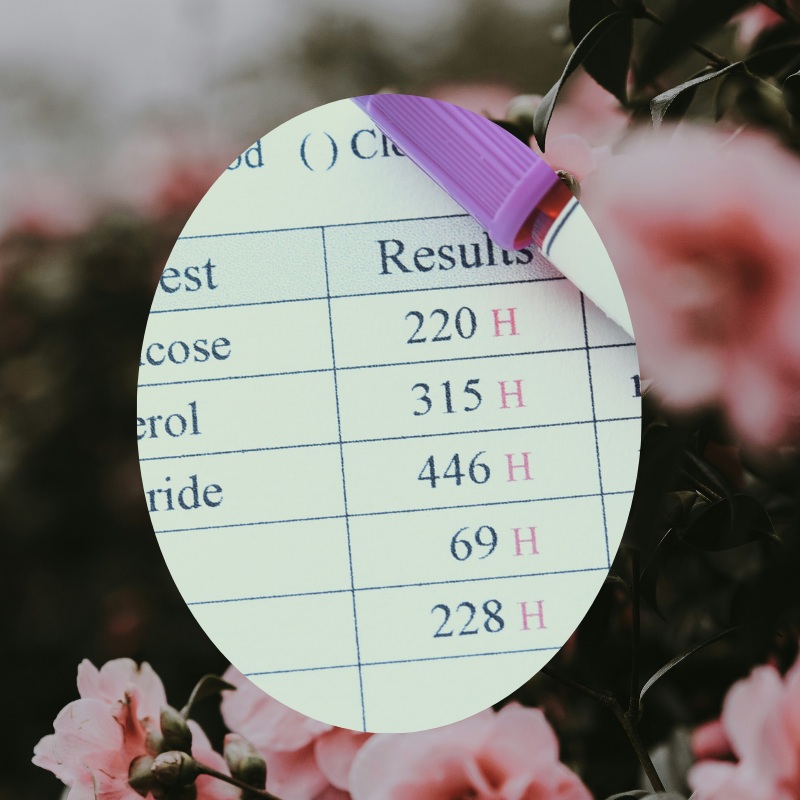Try and make your own deodorant – it’s so easy!
Why would you make your own deodorant?
I started my journey into my health learning about food. I started eating organic, fresh and unprocessed produce and countless vegetables.
I then fell down the rabbit hole discovering more and more about the chemicals that we are exposed to daily.
I would recommend The One Hundred Year Lie by Randall Fitzgerald if you want a great (but scary) overview of what we are up against!
Therefore, I gradually made more changes from trying more natural products to then just making it all myself.
Budgeting to eat organic is difficult but fortunately you can save in other areas and making your own deodorant is one of them!
So what is harmful in everyday deodorants?
The problem with synthetic chemicals is that they are produced in a laboratory so are completely new substances to the human body and there is no methodology that can categorically determine if there is no negative effect from humans. We are the guinea pigs.
This is because:
- It can take years to associate cause and effect such as smoking and lung cancer
- The reaction to a product can vary dramatically between person to person and;
- Chemicals are usually tested in isolation rather than in conjunction with other chemicals that we are exposed to in everyday life.
Four ingredients commonly found in deodorant listed below have been linked to breast cancers but it could be a combination of all three that can really cause problems. We don’t have any firm evidence of causation but studies are showing correlation between the usage and development of breast cancer.
- Parabens: these are preservative compounds found in a lot of beauty products. However, they have a synthetic oestrogen effect which is also associated with hormonal cancers. A study did show that methyl paraben exposure was associated with development of breast cancer genes [i]and Breast Cancer Research UK are actively seeking for parabens to be removed in products or food.
- Triclosan: triclosan is used as an anti-bacterial agent. It was also associated in the above study with breast cancer genes and there was also a study in 2017 which showed an association between exposure and poorer semen quality. [ii]
- Aluminium: this is found in vaccines, food products, antacids and deodorant. There have been studies that link it with breast cancer[iii]particularly as there are high incidences of breast cancers and cysts located in the area where deodorant is applied.[iv]If breast cancer is not enough there has been a posited link between aluminium and Alzheimer’s and a recent study found extremely high levels of aluminium in the brain tissue of some Alzheimer’s sufferers.[v]More research is needed but with an increasing level of cancers and neurodegenerative disorders-it is one to be cautious about.
- Phthalates: these are found everywhere but are often not listed in many products as they are hidden under the label of ‘fragrance’ by law the ingredients of fragrance do not have to be disclosed as they are considered a trade secret. Therefore, be wary of any product listing ‘fragrance’ as an ingredient as that could hide a multitude of chemicals in itself! Phthalates have been associated with a number of serious health problems, including infertility, obesity, asthma, allergies and of course, breast cancer.[vi]
It is important to be aware so you can make an informed decision of waiting till there is more evidence before switching or finding alternatives that have been made from natural ingredients used for millennia. There are now some fantastic alternatives that you can buy in health food shops or you could try and make your own using the recipe below!
Homemade deodorant recipe:
6 tbsps. Coconut oil
3 tbsp. bicarbonate of soda
Infused oils of your choosing such as bergamot or lavender
- Warm the coconut oil and add it into a bowl with the bicarbonate of soda
- Mix well and add any of your favourite essential oils for a nice smell
- Store in a glass jar and apply to your armpits instead of your regular deodorant
[1] Environ Res. 2017 Jan;152:233-243. doi: 10.1016/j.envres.2016.10.021. Epub 2016 Oct 29.
Changes in mammary histology and transcriptome profiles by low-dose exposure to environmental phenols at critical windows of development.
Gopalakrishnan K1, Teitelbaum SL1, Lambertini L1, Wetmur J2, Manservisi F3, Falcioni L3, Panzacchi S3, Belpoggi F3, Chen J4.
[1] Environ Sci Pollut Res Int. 2017 Dec 7. doi: 10.1007/s11356-017-0866-5. [Epub ahead of print]
Environmental levels of triclosan and male fertility.
Jurewicz J1, Radwan M2,3, Wielgomas B4, Kałużny P5, Klimowska A4, Radwan P2, Hanke W5.
[1] J Trace Elem Med Biol. 2014 Apr;28(2):147-50. doi: 10.1016/j.jtemb.2013.12.002. Epub 2013 Dec 19.
If exposure to aluminium in antiperspirants presents health risks, its content should be reduced.
Pineau A1, Fauconneau B2, Sappino AP3, Deloncle R4, Guillard O5.
[1] Morphologie. 2016 Jun;100(329):65-74. doi: 10.1016/j.morpho.2016.02.001. Epub 2016 Mar 17.
Aluminium and the human breast.
[1] J Trace Elem Med Biol. 2017 Mar;40:30-36. doi: 10.1016/j.jtemb.2016.12.001. Epub 2016 Dec 9.
Aluminium in brain tissue in familial Alzheimer’s disease.
Mirza A1, King A2, Troakes C3, Exley C4.
[1] Altern Med Rev. 2010 Sep;15(3):190-6.
Toxic effects of the easily avoidable phthalates and parabens.
IF YOU LIKED THIS POST you might love these
What is Family Tree Therapy?
26 May 2023
Unlocking the Secrets of Illness with Recall Healing
26 April 2023
Meet Alexandra
13 April 2023
Functional Diagnostic Testing
22 September 2022






